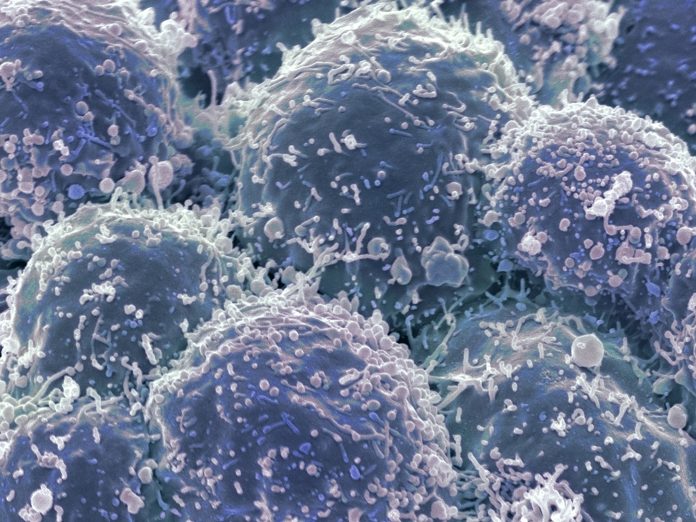
The fight against cancer is often lost once tumor cells become resistant to treatment, more aggressive, and spread throughout the body. Now researchers are revealing the secrets behind tumor evolution, shedding light on the mechanisms that eventually create the most deadly of cancers. At the center of this new effort is a lineage tracing method based on CRISPR-Cas-9 technology that inserts a sequence into a tumor’s genome to act as a digital barcode that can then be traced as tumor cells divide and change over time.
“The strength of this approach is that it lets us study the evolution of cancers with fine-grained detail,” said Matthew Jones, co-first author and graduate student at the Whitehead Institute for Biological Research.
The research, published in Cell on May 5, tracks lung cancer cells from the very first activation of cancer-causing mutations. The research was led by Whitehead Institute Member Jonathan Weissman, Ph.D., Tyler Jacks, Ph.D., professor of biology at the Massachusetts Institute of Technology (MIT), and computer scientist Nir Yosef, Ph.D., associate professor at the University of California Berkeley and the Weizmann Institute of Science.
The detailed tumor history published by the group is the most comprehensive cancer cell history to date using the lineage tracing method. It reveals new insights into how lung cancer progresses and metastasizes. “Every time there is a shift from bulk to single-cell analysis in a technology or approach, it dramatically widens the scope of the biological insights we can attain, and I think we are seeing something like that here,” Jones said.
The lineage tracing method used in the current study involves embedding each tumor cell with an inheritable and evolvable DNA barcode. Each time a cell divides, its barcode gets slightly modified. When the researchers eventually harvest the descendants of the original cells, they can compare the cells’ barcodes to reconstruct a family tree of every individual cell, just like an evolutionary tree of related species. Then researchers can use the cells’ relationships to reconstruct how and when the cells evolved important traits. Researchers have used similar approaches to follow the evolution of the virus that causes Covid-19, in order to track the origins of variants of concern.
In order to track cancer from its very beginning, the researchers developed an approach to simultaneously trigger cancer-causing mutations in cells and start recording the cells’ history. They engineered mice such that when their lung cells were exposed to a tailor-made virus, that exposure activated a cancer-causing mutation in the Kras gene and deactivated tumor suppressing gene Trp53 in the cells, as well as activating the lineage tracing technology. The mouse model, developed in Jacks’ lab, was also engineered so that lung cancer would develop in it very similarly to how it would in humans.
“In this model, cancer cells develop from normal cells and tumor progression occurs over an extended time in its native environment. This closely replicates what occurs in patients,” Jacks said. Indeed, the researchers’ findings closely align with data about disease progression in lung cancer patients. The researchers let the cancer cells evolve for several months before harvesting them. They then used a computational approach developed in their previous work to reconstruct the cells’ family trees from their modified DNA barcodes. They also measured gene expression in the cells using single-cell RNA sequencing to characterize each cell’s state. With this information, they began to piece together how this type of lung cancer becomes aggressive and metastatic.
“In order to develop better therapies, it’s important to understand the fundamental principles that tumors adopt to develop,” said Dian Yang, Ph.D., a postdoctoral fellow in Weissman’s lab. “Tumor progression is generally governed by evolutionary principles. Our study showcases the power of combining lineage tracing approach with single cell transcriptome analysis to uncover the basic principles of tumor evolution.” Yang also said that a key advantage of this method is that it can be easily implemented into different tumor models and different cancer biology questions, promising similar revelatory results in the future. “We want to be able to look at the state of the cancer cells when a patient comes in, and be able to predict how that cancer’s going to evolve, what the risks are, and what is the best treatment to stop that evolution,” he said.













